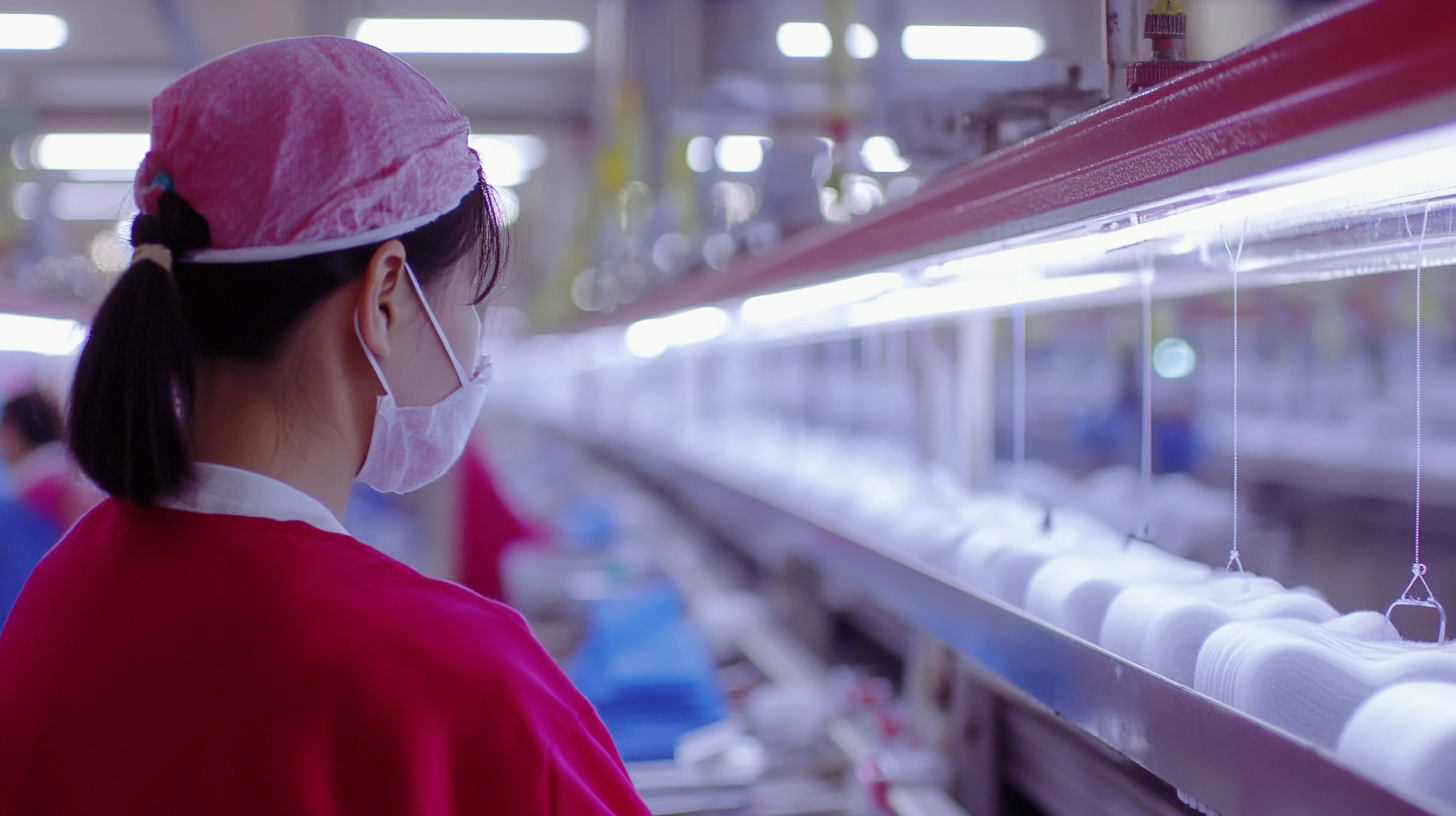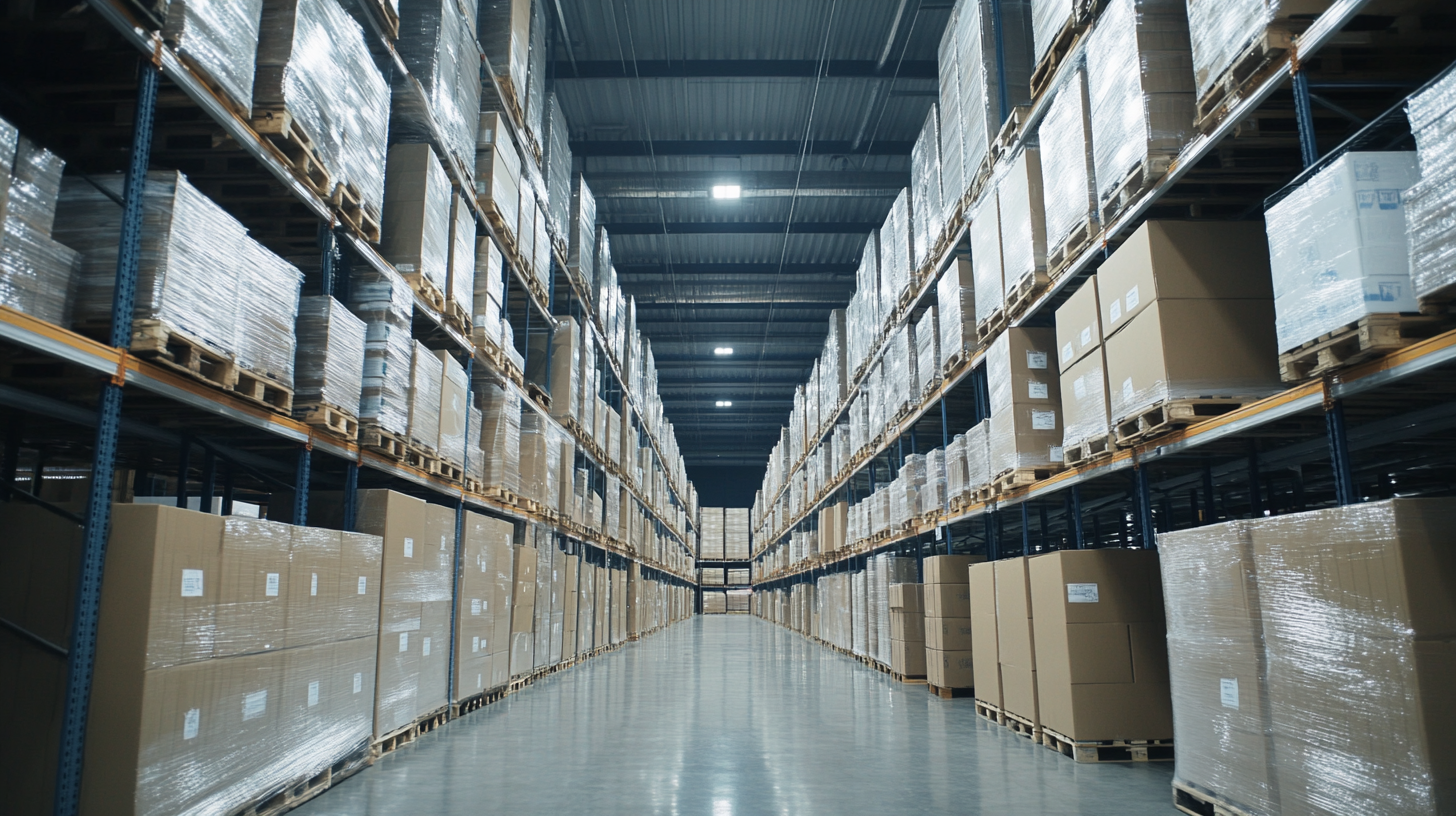Click here to browse our On The Mend Portfolio!
China Manufacturing Thrives Amidst Tariff Challenges Best Local Medical Supply Store Perspective
In recent years, the trade landscape between China and the United States has been marked by significant tariff challenges, yet China's manufacturing sector continues to thrive, presenting a unique opportunity for local businesses, particularly in the medical supply industry. According to a report from the China Federation of Logistic & Purchasing, the manufacturing Purchasing Managers' Index (PMI) in China has consistently remained above the neutral point of 50, reflecting a robust expansion amidst external pressures. This resilience is particularly evident in the medical supply sector, where local medical supply stores are increasingly able to capitalize on domestic production capabilities and innovation. Indeed, with the global shift towards self-sufficiency, local medical supply stores can leverage China's manufacturing prowess to meet the rising demand for essential healthcare products, positioning themselves favorably in a competitive marketplace. Ultimately, this scenario underscores the importance of adaptability and strategic sourcing in navigating the complexities of international trade while supporting local economies.

Impacts of Tariff Challenges on China's Manufacturing Sector Growth
China's manufacturing sector continues to demonstrate resilience despite facing significant tariff challenges imposed by various countries. A recent report from the National Bureau of Statistics of China reveals that the manufacturing purchasing managers' index (PMI) remained above the critical 50-point mark, indicating expansion. The PMI for August 2023 stood at 51.2, showcasing the sector's robust health amidst external pressures. This growth can be attributed to companies adapting their supply chains and emphasizing local production to mitigate the impacts of tariffs.
Moreover, a study conducted by the China Federation of Logistics and Purchasing highlights that about 65% of manufacturers have shifted their focus to innovative practices and investment in technology to sustain their growth. The report emphasizes that industries such as medical supplies and electronics are particularly thriving, as they leverage advanced manufacturing techniques to reduce costs and improve product quality. By tailoring their offerings to meet domestic demand and minimizing reliance on international markets, these manufacturers not only counteract the effects of tariffs but also position themselves as leaders in a rapidly evolving global supply chain landscape.

Resilience of Chinese Manufacturers in the Face of Global Trade Disruptions
The global economic picture shows resilience in the face of ongoing trade disruptions, particularly highlighted by the remarkable adaptability of Chinese manufacturers. In recent years, tariffs and trade tensions have posed significant challenges, yet the manufacturing sector in China has showcased an impressive ability to pivot and thrive. This resilience is evident in their innovative approaches to production and supply chain management, allowing them to meet local and international demands effectively.
Local medical supply stores have been particularly impacted by these global dynamics. As Chinese manufacturers continue to enhance their operational efficiencies, they are able to provide high-quality medical supplies at competitive prices, even amidst rising costs and supply chain hurdles. Their commitment to maintaining product standards while expanding their reach has made them invaluable partners for medical supply stores seeking reliable inventory sources. The ability of these manufacturers to adapt quickly and efficiently not only supports local businesses but also contributes to the overall stability of the supply chain in uncertain economic times.

Innovative Strategies Employed by Medical Supply Stores in China
Amidst the complexities brought about by international tariff challenges, medical supply stores in China have adopted innovative strategies to thrive in a competitive landscape. The Medical Device Innovation Hub reported a significant increase in the local production of essential medical supplies, with over 70% of critical devices now manufactured domestically. This surge is attributed to the proactive measures taken by local suppliers to streamline their operations and enhance their product offerings in response to rising demand and supply chain disruptions.
One notable strategy is the focus on research and development (R&D). According to a report from Deloitte, R&D investment in China's medical supply sector has soared by 15% annually, enabling companies to introduce cutting-edge products that meet both local and international standards. Furthermore, collaborations with technology firms have led to the integration of advanced technologies such as AI and IoT in medical devices, improving operational efficiency and patient outcomes. By leveraging these innovative approaches, medical supply stores are not only overcoming tariff-induced challenges but also positioning themselves as leaders within the industry.
Data-Driven Insights: Growth Rates in China's Manufacturing Industry Amid Tariffs
China's manufacturing sector continues to display resilience amidst the persistent challenges posed by tariffs. Recent data highlights notable growth rates across various components of this industry, particularly in the semiconductor market, which is projected to reach a substantial size due to increasing demand for memory devices and logic devices. According to industry reports, the global semiconductor market is expected to grow at a CAGR of over 5% in the coming years, underscoring China's pivotal role in meeting both domestic and international needs.
One key factor driving this growth is the adaptation strategies employed by manufacturers. Chinese companies have increasingly focused on innovation, investing heavily in research and development to enhance their product offerings. This strategic shift has allowed them to mitigate the effects of tariffs while maintaining competitiveness. For instance, the demand for analog ICs and microprocessors has surged as various industries, including automotive and telecommunications, shift towards more advanced technologies.
Tip: To capitalize on this vibrant market, companies should explore partnerships with local suppliers to enhance supply chain efficiency and reduce costs. Another approach is to diversify product lines to cater to emerging technological trends, ensuring they remain relevant in a rapidly evolving landscape. Adopting data-driven decision-making can also enhance operational effectiveness and uncover new opportunities for growth.
Comparison of Manufacturing Costs: China vs. Competitor Nations Amidst Tariffs
Amidst the ongoing tariff challenges, the manufacturing landscape in China continues to demonstrate resilience, particularly within the medical supply sector. According to a report by the International Trade Administration, despite tariffs imposed by the United States, China's manufacturing costs remain competitive due to lower labor costs, strategic supply chain logistics, and advanced automation technologies. For instance, labor costs in China are approximately 30-40% lower than those in countries like the United States and Germany, allowing local manufacturers to maintain profitable margins even in a tariff-impacted environment.
In comparison, competitor nations such as Vietnam and Mexico have made strides in attracting manufacturing investment. However, a recent analysis by McKinsey & Company highlights that while Vietnam offers comparable labor costs, it lacks the extensive supply chain infrastructure and technological investment that China possesses. This infrastructure enables Chinese manufacturers to achieve economies of scale that are difficult for newer players to replicate. Furthermore, the focus on high-tech manufacturing in China, highlighted by a projected growth rate of 8% in the medical device sector by 2025, positions it as a leading contender amidst global tariff struggles. This nuanced comparison underscores the strategic advantages that continue to fuel China's manufacturing success.
China Manufacturing Thrives Amidst Tariff Challenges: Comparison of Manufacturing Costs
| Country | Average Manufacturing Cost (USD) | Tariff Rate (%) | Total Cost Post Tariff (USD) | Competitiveness Score (1-10) |
|---|---|---|---|---|
| China | 6,000 | 15 | 6,900 | 8 |
| Vietnam | 5,000 | 10 | 5,500 | 9 |
| India | 4,500 | 5 | 4,725 | 7 |
| Mexico | 5,800 | 20 | 6,960 | 8 |
| Germany | 10,000 | 25 | 12,500 | 6 |
View Products
- Bathroom Safety & Shower Systems
- Canes, Knee Walkers, Rollators & Wheelchairs
- Compression Socks, Stockings & Custom Garments
- CPAP Machines, Devices, Accessories & Supplies
- Incontinence Supplies
- Lift, Reclining, and Sleeper Chairs
- Power Scooters, Power Chairs & Accessories
- Ramps & Handicap Access
- Stair, Platform & Portable Lifts
- Blog
Our Locations
Visit Us in CT, NY & CA
Looking for a 'medical store near me'? Call On The Mend for the equipment and service you need!
